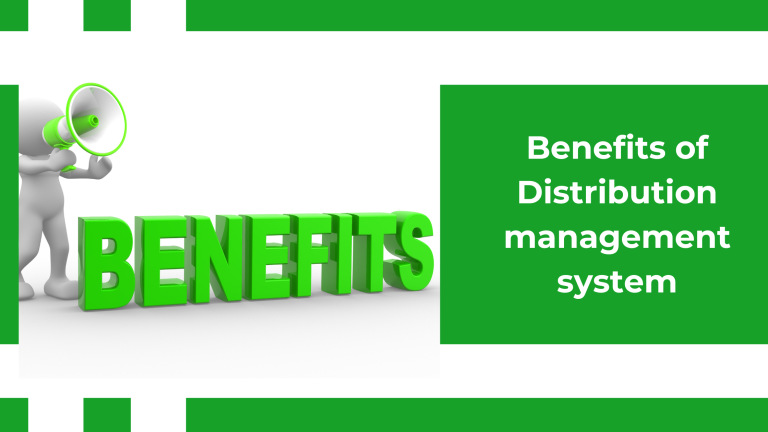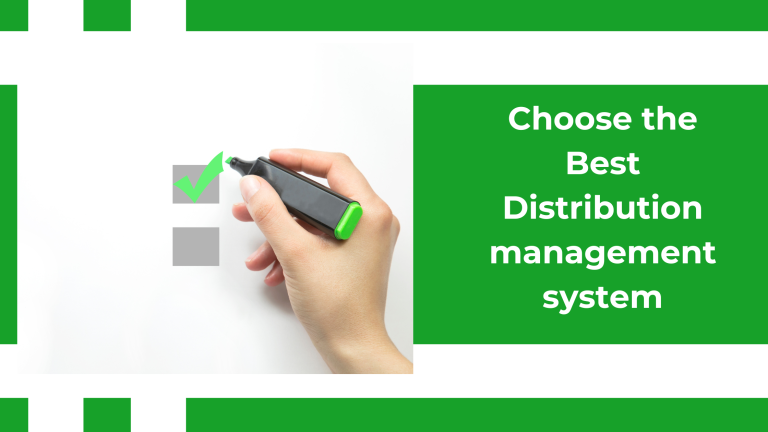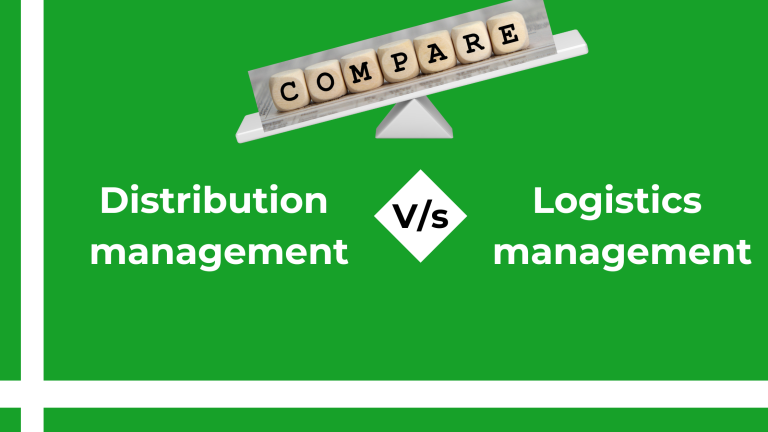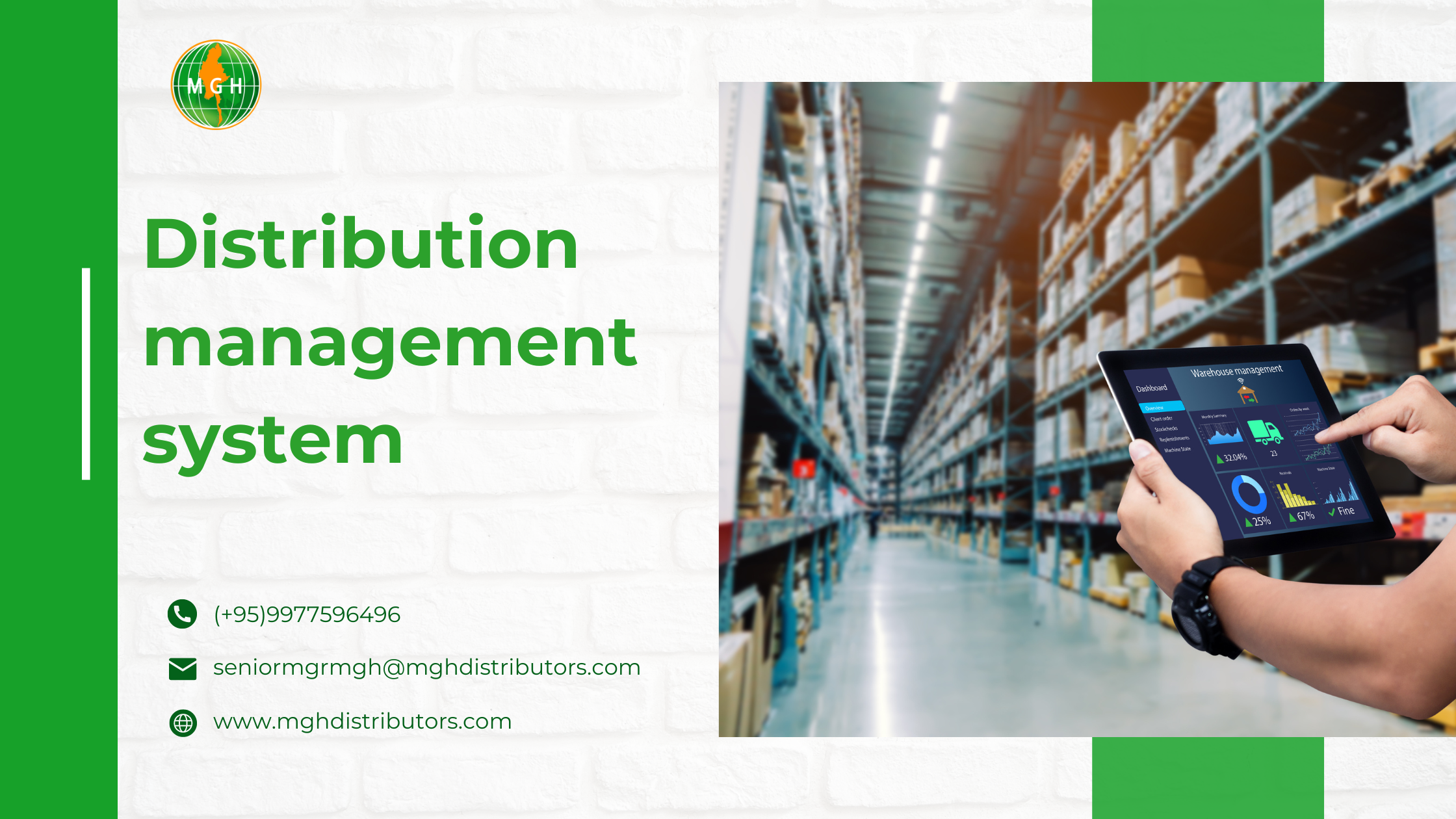When you place an order with Amazon, you might notice that your product goes through many processes, like packing, shipment, and delivery, before it reaches you.
This is just a small part of the distribution management system, where the brand (Amazon) ensures that your product reaches your place safely and on time.
A distribution management system is a vast framework that coordinates and optimizes the flow of products from suppliers to end-users.
Now, you might be interested in knowing about it in detail. So, let’s dive into this blog where you will learn about DMS in-depth, its benefits, and how you can choose the right DMS features for your business.
Our blog doesn’t end here because, in the end, we will share the difference between distribution management and logistics management.
Let’s get started then!
What is a Distribution Management System?
A distribution management system is the software responsible for handling the processes of delivering goods from the producer to the end-users, ensuring that the right product is picked, packed, shipped, and delivered to the consumer. It keeps a close eye on the inventory to avoid shortages or overstocking of goods. It also helps in choosing the right shipping routes for timely delivery and manages customer interaction related to queries, returns, and replacements.
DMS simplifies the procedure, making the distribution process effective and efficient for the businesses involved in manufacturing, packaging, storage, distribution, order-taking, warehousing, and wholesale.

How Does a Distribution Management Strategy Benefit Your Business?
Many key players like manufacturers, wholesalers, retailers, and end-users are involved in it and benefit from the distribution management strategy. Let’s see what the benefits are:
1. Monitors Inventory –
Old techniques of checking inventory in warehouses require additional labor and are time-consuming. On the other hand, distribution management system software allows you to keep track of products in your warehouses to avoid a shortage of stocks and help you quickly meet your customers’ orders. It also prevents you from overstocking to avoid wastage and save your money.
2. Improves Efficiency –
A distribution management system helps you improve workplace efficiency by handling time-consuming tasks like inventory management, order processing, shipping coordination, and tracking, allowing you to devote more time to important tasks like customer relationship management and business growth.
3. Customer Satisfaction –
Customer satisfaction plays a crucial role in every distribution business (whether big or small). If a customer frequently faces out-of-stock or delayed delivery situations while placing the order, it may affect your business reputation and you may lose loyal customers. Thus, you should ensure quick fulfillment of customer orders for a positive customer experience and repetitive business.

Choosing the Most Suitable Features for Your Business
It’s crucial to choose the most suitable features while selecting a distribution management system for your business, as it can make or break your brand’s operational efficiency and overall success. Let’s see its key features:
1. Advanced Inventory Management –
Real-Time Tracking and Visibility: This feature gives you minute details of your stocks, enabling you to monitor your inventory in real time. It helps to fulfill your customers’ orders without delay, leading to increased customer satisfaction and saving you from overstocking or running out of stock.
Automated Stock Alerts and Replenishment: This software has an automatic notification that alerts you when your stock level drops below a predefined threshold. It also reorders your products automatically to maintain optimal stock levels without any manual intervention.
Multi-Location Support: This software is beneficial for you if you have multiple warehouses, as it manages your inventory across different storage points through a single system.
2. Efficient Order Management –
Streamlined Order Processing: This feature simplifies and speeds up your business’s distribution process by handling customer orders and preparing them for shipment to ensure timely delivery of the products.
Order Tracking and Status Updates: This feature of DMS updates the order status and enables real-time order tracking for both customers and staff to ensure transparency in communication.
Returns and Exchange Management: It efficiently manages the returns and exchange of customers’ products and keeps track of returned items and their adjustments in the inventory.
3. Advanced Analytics and Reporting –
Demand Forecasting and Planning: This feature enables you to accurately plan your business’s inventory levels by analyzing historical data of the products to forecast its future demand. This extracted data helps you to reduce the risk of overstocking or understocking the products in your warehouses.
Performance Reporting and Dashboards: This feature provides you access to performance reporting tools and dashboards to monitor and evaluate various aspects of your distribution operations. It provides information on different business metrics like sales performance, inventory turnover, order fulfillment rates, and delivery efficiency in the form of charts and graphs, making it easier for you to track performance and identify areas of improvement.
Data-Driven Insights: It analyzes data collected from various sources like sales transactions and customer interaction to help you make data-driven decisions. It also identifies trends to help you improve your distribution strategies and enhance the overall operational efficiency of your business.
4. Integrated Transportation Management –
Route Optimization and Planning: This feature helps you optimize your product delivery routes and find the best routes by analyzing different factors like distance, traffic, and delivery window. This helps in minimizing transportation costs and delivering the products to your customers on time.
Carrier Management and Selection: It evaluates available carrier options and selects the best carriers for your product distribution based on cost, reliability, and services. The integrated APIs with the carrier help in seamless communication between DMS and the chosen carrier and enable you to track the shipment status in real time.
Monitoring and Managing Freight Expenses: This feature controls the cost associated with transporting goods by analyzing all the expenses like shipping rates, fuel costs, handling fees, and any additional charges such as customs duties or tariffs to maintain profitability and operational efficiency of the business.
5. Scalability and Customization –
Support for Adding New Features or Modules: A scalable DMS gives you access to add new features or modules in your dashboard to handle additional functions and needs as your business expands.
Customizable Modules and Integrations: The customizable distribution management system allows you to choose individual modules to fit your specific business processes.
Integrating with Other Business Systems: Ensure smooth data flow between your DMS and other systems to improve efficiency and reduce manual data entry. Integration enhances overall system functionality and accuracy.
6. User-Friendly Interface-
Ease of Use for Different Roles: Select a DMS with a user-friendly interface for your business to reduce training time. The system should be easy to navigate for all users, like warehouse staff, managers, and other roles, to help them perform their tasks efficiently.
Importance of a Simple, Intuitive Interface: A clear and straightforward design will make it easier for your team to interact with the system, increasing their productivity and reducing manual errors.
Customizable Dashboards and User Roles: Customized dashboards and access controls will help you to match the specific needs of different users to ensure they can see the most relevant information for their roles.
7. Security and Compliance:
Measures for Safeguarding Sensitive Data: This feature helps you implement robust security measures like data encryption and secure login protocols to protect sensitive information of your business and customers from unauthorized business.
Compliance with Industry Standards: This feature ensures that your system adheres to relevant regulations and industry standards like GDPR (General Data Protection Regulation) for data protection or CCPA (California Consumer Privacy Act) for privacy.
User Access Controls and Permissions: This feature helps you set up role-based access controls to manage user access and actions for different parts of the system.
8. Mobile Access and Flexibility:
Access from Mobile Devices: This feature enables you to access DMS from your smartphones or tablets, allowing for greater flexibility and convenience, especially for field staff and remote users.
Benefits of Mobile Access for Field Staff and Remote Users: This mobile access feature allows field staff and remote users to update information, track shipments, and manage tasks while on the go, improving responsiveness and operational efficiency.
Real-Time Updates and Data Entry from Any Location: This feature ensures that data entered or updated by users via mobile devices is synchronized in real time, keeping all users and systems up-to-date and maintaining accurate information across the board.

Distribution Management vs. Logistics Management
Now that you are aware of the benefits and features of a distribution management system, let’s see the difference between distribution management and logistics management:
Aspect | Distribution Management | Logistics Management | |
Focus | Movement of finished goods to customers. | Entire supply chain management. | |
Scope | Distribution channels and order fulfillment. | Procurement, transportation, warehousing. | |
Objectives | Timely and efficient product delivery. | Optimize overall supply chain efficiency. | |
Key Activities | Order processing, shipping, and delivery. | Transportation planning, warehousing, and inventory. | |
Performance metrics | Delivery times, order accuracy, customer satisfaction, and cost of delivery. | Supply chain cost, inventory turnover, order cycle time, and transportation efficiency. | |
Tools and Technology | Distribution software, route optimization. | Enterprise Resource Planning (ERP) systems, Transportation Management Systems (TMS), and Warehouse Management Systems (WMS). | |
Coordination with Other Functions |
| Procurement, production, and sales. |
Conclusion
Distribution management system software streamlines the process of delivering goods from manufacturer to consumer by efficiently handling the order management, shipping process, and transportation process. There are some key features like inventory management, user-friendly interface, transportation management, and mobile accessibility you need to look at before choosing the distribution management system software for your business. Features evaluation is also crucial because it helps you to choose the right features that match your business requirements and increase operational efficiency.



